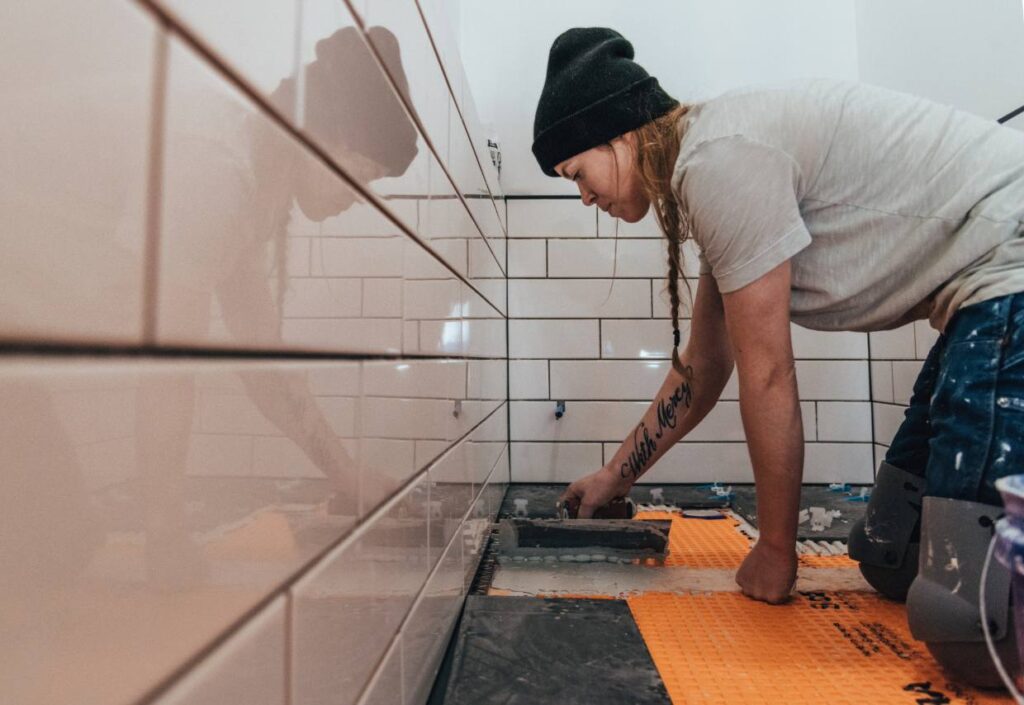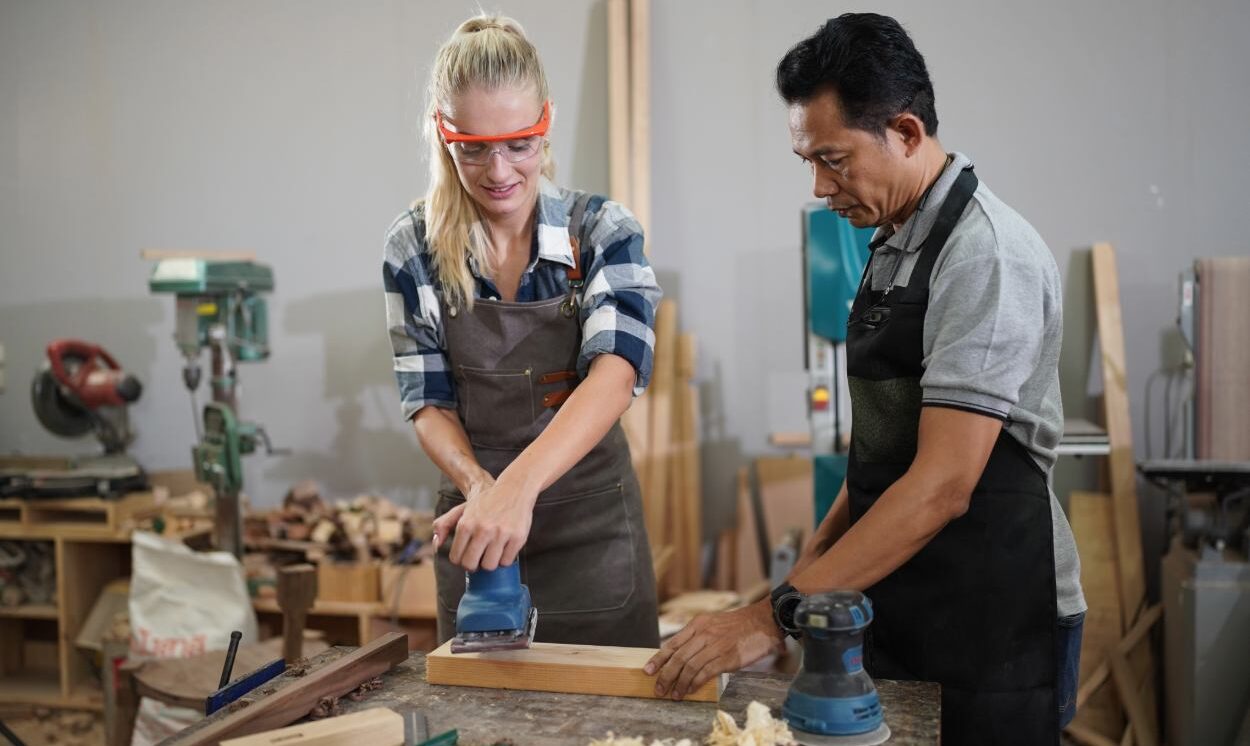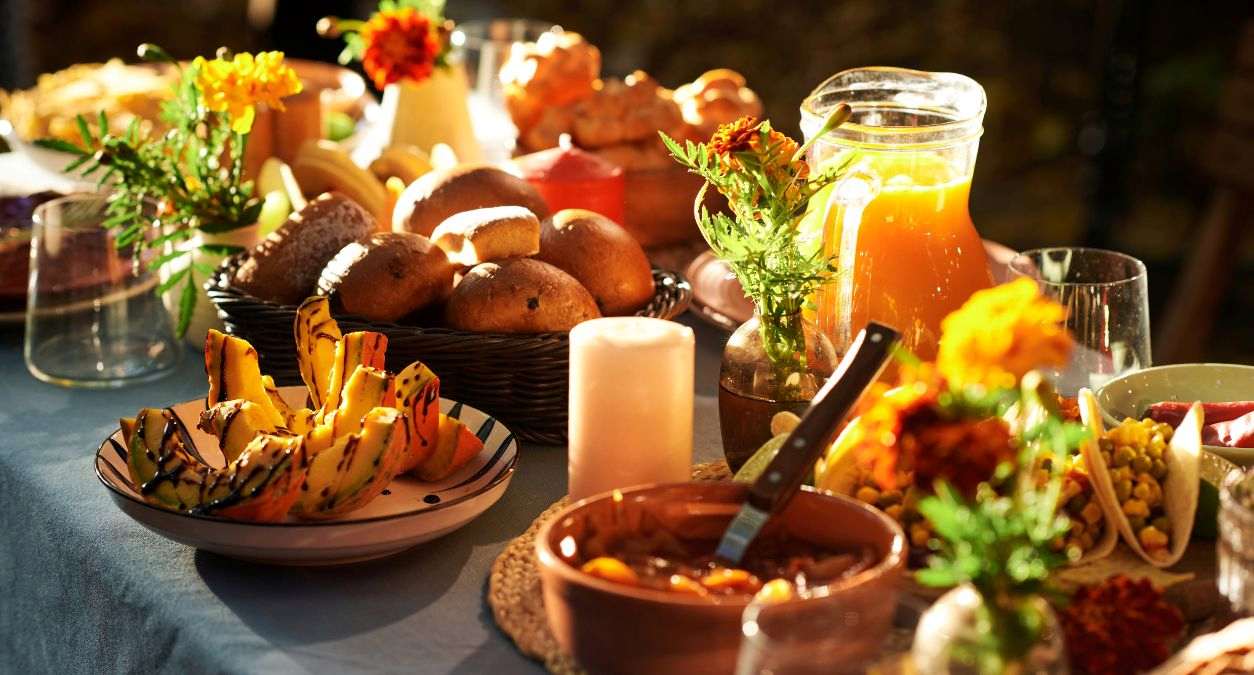Skilled trades – from plumbing and carpentry to electrical work and bricklaying, are essential to the UK economy. Yet, they remain some of the most male-dominated professions. While women make up nearly half of the UK workforce overall, they account for just 2% of skilled trades jobs. On construction sites specifically, that figure drops to barely 1%.
But here’s the opportunity: the trades sector faces a chronic skills shortage. Employers are desperate for new talent, and more women are starting to train as plumbers, electricians, decorators, and builders than ever before. That means now could be the perfect time for women to consider these careers.
Let’s take a look at where women are finding the most success in the trades, which paths offer the strongest opportunities for growth, the challenges that still need tackling, and how women across the UK are carving out thriving careers in this vital industry.
Which trades do women choose most?
Although women are still underrepresented across all trades, some jobs are attracting more women than others.
The latest data shows:
| Trade | % of Women in Workforce | Number of Women (approx.) | Why Popular? | Challenges |
| Painting & Decorating | ~5% | 6,200 | Creative, flexible, lower barriers to entry | Pay gap vs men still 20–25% |
| Plumbing & Heating | ~2% | 3,300 | High demand, good pay, self-employment opportunities | Customers sometimes doubt ability |
| Electricians | ~1.7% | 4,200 | One of the highest-paid trades, transferable skills | Long training, culture slow to change |
| Carpentry & Joinery | ~1% | 2,400 | Practical, creative, self-employment potential | Heavy male dominance, stereotypes |
| Bricklaying / Roofing | <1% | <500 | Skilled, high demand | Very physical, few role models |
Outside of construction, gardening and landscaping have higher female participation (around 17%), which boosts the overall “trades” figure to ~4%.
Women are making the most headway in painting/decorating, plumbing, and electrics, with other trades still lagging.
Best trades for women to learn

When it comes to choosing a trade, popularity and practicality matter. The trades attracting the most women today – plumbing, electrics, painting/decorating, carpentry, and general building – share a few common traits: strong demand, good earnings potential, and the chance to be your own boss.
Each trade has its own appeal depending on what you enjoy – whether it’s problem-solving, creativity, technical skills, or hands-on building. Below, we break down the most popular choices, why they’re attractive, and what you need to succeed.
Plumbing
Demand: Extremely high – plumbing is considered one of the “evergreen trades” because every home and business needs reliable water and heating. With the UK facing shortages of plumbers, women entering the field are stepping into guaranteed work.
Accessibility: Requires formal training and qualifications (NVQ Level 2/3 or an apprenticeship), but once qualified, self-employment is very achievable.
Earnings: £30k–£40k average, with self-employed plumbers often earning more. Emergency callouts and specialist work (like underfloor heating or renewable systems) pay a premium.
Skill sets that appeal: Problem-solving, attention to detail, communication skills (especially with clients in their homes), and reliability. Many customers specifically seek out female plumbers because they feel more comfortable having them in the house.
Why it’s popular: Combines job security with strong earnings and independence.
Electricians
Demand: One of the highest-demand trades, with growth boosted by the shift to renewable energy, smart homes, and electric vehicle charging installations. The UK has a serious shortage of qualified electricians.
Accessibility: Training can take longer than other trades (apprenticeships or qualifications like NVQ Level 3), but the career rewards are substantial. Requires maths and technical aptitude.
Earnings: Among the highest-paid trades – £32k–£45k on average, with scope to earn significantly more as a contractor or specialist.
Skill sets that appeal: Logical thinking, precision, patience, and an interest in technology. The trade suits people who enjoy solving technical challenges and working with modern innovations.
Why it’s popular: High pay, future-proofed by green energy trends, and opportunities to niche down (e.g. solar panels, EV charging). The main challenge is the culture, which remains very male-heavy.
Painting & Decorating
Demand: Always needed in both residential and commercial settings. Demand is steady, but it’s a more competitive market compared to plumbing or electrics.
Accessibility: Training is relatively short and affordable. Many decorators also enter the trade through experience rather than formal qualifications. Tools and start-up costs are lower.
Earnings: £20k–£30k average, though self-employed decorators can earn more depending on workload and specialisation (e.g. murals, restoration, or luxury finishes).
Skill sets that appeal: Creativity, attention to detail, patience, and precision. For many women, this trade offers an outlet for artistic skills while still being practical.
Why it’s popular: Lower entry barriers, flexibility, and creative satisfaction. Particularly appealing to those who enjoy transforming spaces visually.
Carpentry & Joinery
Demand: Consistently strong, with growth in bespoke joinery, furniture-making, and eco-friendly building. Carpentry is also core to most building projects.
Accessibility: Apprenticeships and NVQ Level 2/3 qualifications are the standard route. Start-up costs are higher due to tools and workshop requirements.
Earnings: Around £25k–£35k, with potential for more in niche areas like custom furniture or heritage restoration.
Skill sets that appeal: Craftsmanship, creativity, patience, and physical dexterity. Suits women who enjoy hands-on building and the satisfaction of creating tangible, lasting results.
Why it’s popular: For those who love making and building, carpentry offers both creative and practical fulfilment. However, female numbers remain tiny (<1%), so women entering the field are still pioneers.
Multi-trade / General Builder
Demand: Very high – builders are in short supply across the UK, and those with multiple skills (plastering, tiling, basic plumbing, electrics) are especially sought after.
Accessibility: Requires experience across several trades, so usually better for those who have already trained in one core skill and want to expand.
Earnings: Can range from £25k–£40k depending on scope, with multi-trade builders who run their own business often earning more.
Skill sets that appeal: Versatility, leadership, organisation, and confidence in a range of tasks. Appeals to women interested in running their own firms or project-managing teams.
Why it’s popular: Ideal for those who want independence, flexibility, and the ability to take on a variety of work. However, female representation is the lowest in this category (<1%).
Best bet right now
While painting & decorating is currently the most common entry trade for women, the best long-term bets for income, demand, and opportunities are plumbing and electrics. Both are in high demand, well-paid, and increasingly valued by customers looking for female-led services.
Barrier’s women face in trades jobs

If trades are such a good opportunity, why aren’t more women joining? The barriers are well-documented:
Gender stereotypes – Schools rarely promote trades to girls; many still see them as “men’s jobs.”
Workplace culture – A 2024 survey found 72% of women in construction had faced discrimination. “Boys’ club” culture, harassment, or lack of respect remain issues.
Isolation – Being one of very few women on a site can feel lonely. With limited role models, many women struggle to picture themselves succeeding.
Facilities and flexibility – Lack of female toilets, rigid working hours, and poor maternity support still deter some women.
Pay gap – Across 15 trades, women earn on average 28% less than men. In some trades (e.g. tiling), women earn less than half.
Why things are changing
Despite the challenges, momentum is building.
- Apprenticeships – Female apprenticeships in construction have surged by 366% over five years, with over 10,000 women now training in construction-related courses.
- Local hotspots – In London, boroughs like Southwark and Wandsworth report nearly 30% of construction apprentices are female.
- Customer demand – Searches for “lady plumber near me” have risen 450% in recent years. Surveys show 96% of homeowners are happy to hire female tradespeople, and 1 in 3 actually prefer it.
- Industry pledges – Bodies like the Chartered Institute of Building have launched diversity charters, while many firms are now adopting anti-harassment policies, flexible hours, and female mentoring schemes.
Women leading the way
One of the most exciting trends is the rise of women-owned trade businesses.
- Around 13% of UK construction firms are now female owned.
- Growth has been huge – women-led construction companies have nearly doubled since the late 2000s.
- Many women find running their own trade business gives them more control over work culture, hours, and clients.
Examples include:
- Stopcocks Women Plumbers, a national franchise of all-female plumbers.
- Pink Plumbers and Pink Electricians, who use branding to stand out while tapping into demand for women-led services.
- Instagram communities like #Tradeswomen where female plumbers, electricians, and carpenters share work and support each other.
Why choose a trade career?
For many women, trades may not have been presented as an option in school or by career advisors. But the reality is that skilled trades can be some of the most rewarding, flexible, and financially secure careers available. Whether you’re 18 and choosing your first path or 38 and looking for a career switch, the doors are open.
Here are some of the key reasons why a trade career is worth considering:
- High demand and job security – The UK faces a massive shortage of skilled tradespeople, meaning your skills will always be needed.
- Good pay – Many trades earn more than graduate careers, without the burden of student debt.
- Flexibility – Self-employment is common, giving you control over your hours, clients, and workload.
- Customer demand – Many clients actively seek out female tradespeople, especially in households where they feel more comfortable.
- Impact – You’ll be breaking barriers, challenging stereotypes, and paving the way for future generations of women.
Your first steps into a skilled trade
If you’re ready to explore a trade career, there are several routes in. Each has its own advantages depending on your circumstances, experience, and preferred style of learning.
Apprenticeships: Earn while you learn
Apprenticeships combine classroom learning with on-the-job training. They are one of the most popular ways to enter the trades because you earn a wage while gaining industry-recognised qualifications. Many employers are actively encouraging female applicants, and some local councils run women-focused apprenticeship schemes.
Qualifications: The classroom route
Many colleges and training providers offer trade-specific courses, such as NVQ Level 2 or 3 in plumbing, electrical installation, or carpentry. These courses give you structured, classroom-based training before moving into employment. Some can be studied part-time, which is especially useful if you’re retraining later in life.
On-the-job experience
Some women start out by working directly with a qualified tradesperson or company as a trainee. This route gives you valuable real-world experience, helps you learn the day-to-day flow of jobs, and builds contacts in the industry. Even shadowing a tradesperson for a short period can be a great way to see if the work suits you.
Labouring
Labouring roles on building sites don’t usually require formal qualifications and can be an excellent way to gain entry-level experience. Many women use labouring as a stepping stone to apprenticeships or trade-specific qualifications once they’ve got a feel for the industry.
Pro Tips for Success
- Network early – Join women-in-trades groups online, connect with local colleges, and look for organisations that run women-focused programmes.
- Seek out mentors – Having an experienced tradesperson to guide you can make the early years much easier.
- Build visibility – Social media and word-of-mouth are powerful tools for finding work once you’re trained, particularly for sole traders.
Final thoughts
Women may still make up just 1–2% of UK tradespeople, but that’s beginning to change. Apprenticeships are booming, customers are demanding female tradespeople, and more women are setting up their own businesses.
Yes, barriers remain – from stereotypes to pay gaps – but the momentum is undeniable. With skill shortages growing, the industry needs women, and forward-thinking companies are starting to recognise that.
If you’ve ever thought trades weren’t “for you,” now might be the time to think again. Whether you’re picking up a paintbrush, a drill, or a toolkit, there’s space – and growing support – for women in skilled trades.
Tradesperson Insurance

*Disclaimer – This blog has been created as general information and should not be taken as advice. Make sure you have the correct level of insurance for your requirements and always review policy documentation. Information is factually accurate at the time of publishing but may have become out of date.
Last updated by




























